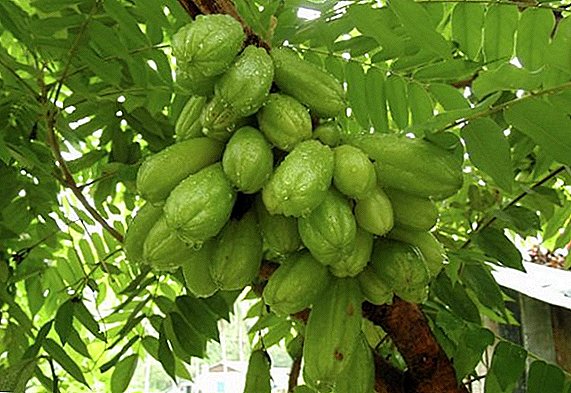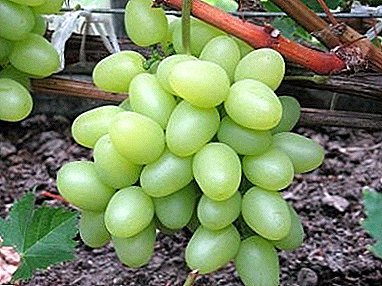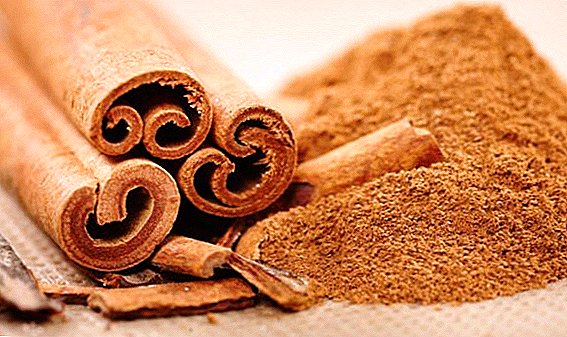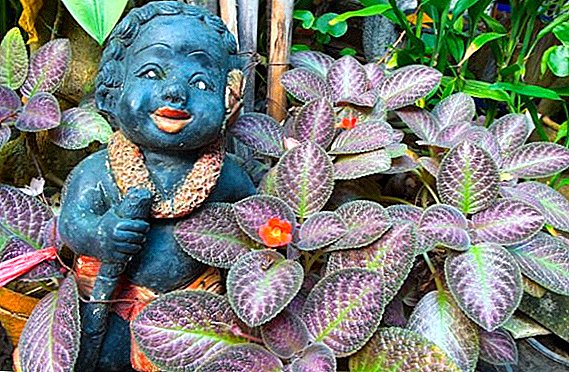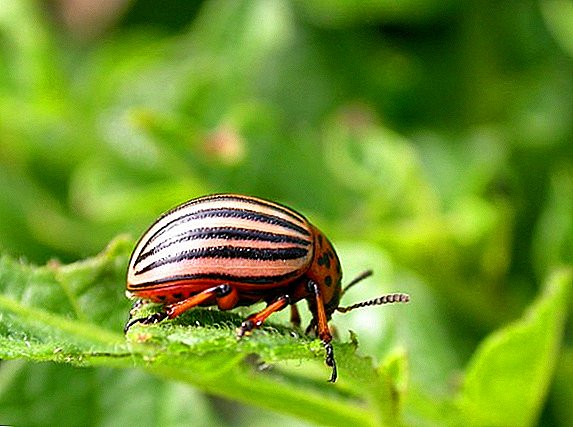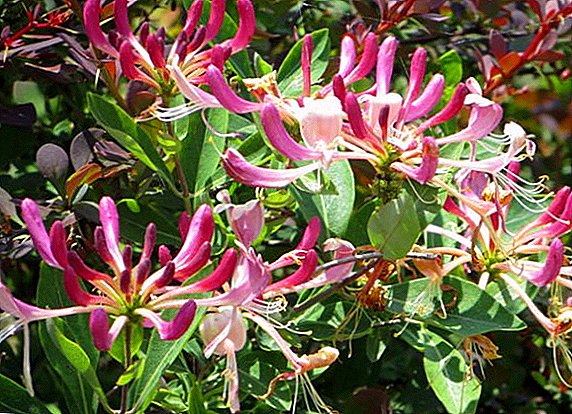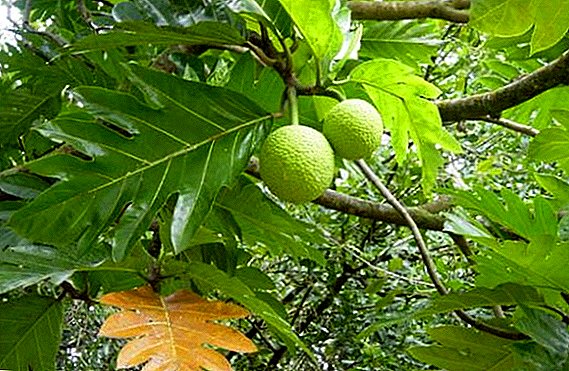 Who does not like to feast on fragrant sweet mulberry, try honey figs? Everyone knows about what a valuable natural resource is rubber. Many have heard about the mysterious breadfruit, and some even about the milky, "tree-cow."
Who does not like to feast on fragrant sweet mulberry, try honey figs? Everyone knows about what a valuable natural resource is rubber. Many have heard about the mysterious breadfruit, and some even about the milky, "tree-cow."
About silk fabric and do not need to tell, everyone knows its quality, convenience and beauty. All these things, and not only, give a person mulberry plants.
The word "here" is of Turkic origin, which is not surprising, because the plants of this family are mainly southern, tropical inhabitants, but they have been useful to man since ancient times and have not lost their importance nowadays.
Botanical description
The group includes at least 1,700 species in more than 65 genera. This family is replete with a variety of forms, some of which are very peculiar:
- evergreen tropical trees;
- half leafing;
- deciduous;
- shrubs;
- herbaceous perennials and annuals;
- climbing vines.
It is rather difficult to give common characteristics characteristic only of the mulberry family, which could distinguish them against the background of other families belonging to the nettle order.
For example, the milky sap and milch gills — signs that were considered characteristic of mulberries, are also found in other plants belonging to the nettle family.  Signs of mulberry plant family:
Signs of mulberry plant family:
- arrangement of leaves opposite or next;
- the leaves have a diverse shape: dissected and whole, serrated and whole-edged, can be supplied with small stipules;
- dioecious flowers can be mono- and dioecious, often are a hanging nondescript earring;
- mulberry flowers are rather peculiar: not having a corolla or same-sex, the number of stamens varies, the stigma is one or two, and only one ovule;
- pollination occurs both by wind and with the help of insects, in some cases only certain types of insects specialize in specific plants;
- the ovary is both upper and lower;
- a nutlet or a drupe is a fruit.
Tribes of the family
It is very difficult to classify a family that is dazzled with such a variety, with an enormous number of species and without characteristics that can isolate it from others.
The mulberry family is traditionally divided into 6 tribes:
- artokarpovye;
- throwable;
- dorstenia;
- ficus;
- olmedic;
- mulberry
 Consider in detail each of them.
Consider in detail each of them.Artokarpovye
The tribe Artokarpovyh or Artokarpovyh (lat. Artoearpeae) include 15 genera, which include about 100 species. Most important is the genus Artokarpus, to which the breadfruit belongs, as well as the tree called jackfruit.
Their fruits are fed by the population living in tropical countries - the areas where these trees grow.
Did you know? Plants of the genus Artokarpovykh have long been cultivated by man precisely for obtaining food resources, mention of which reached us in the writings of Theophrastus written before our era, and Pliny, whose letters date from the beginning of a new era.
 Artokarpus are both evergreen and deciduous. Their leaves come in a wide variety of forms, varying even within the same tree.
Artokarpus are both evergreen and deciduous. Their leaves come in a wide variety of forms, varying even within the same tree.The inflorescences of plants of this genus are male and female, the flowers are small, do not differ in pomp and beauty. In males, only one stamen.
Different types are pollinated in different ways: for example, the breadfruit did not bother to supply its flowers with a smell; obviously, it does not need to attract insects where the wind manages. Other plants like jackfruit lure pollinators with sweet smells.
Did you know? Even lizards serve the pollination of artocarpus, systematically searching for food in their flowers.
This genus is rich in large stem, whose weight can exceed 10 kilograms. They eat their pulp and seeds.
Artokarpus grows in India, Indochina, Papua and New Guinea, Fiji and the Malay Archipelago - in a word, in a region called Indo-Malesian floristic sub-kingdom in science, in the eastern part of which there are three more close relatives: parartokarpus, prainea, holletiya. The plants in them, mostly evergreen.  Other genera related to artokarpov:
Other genera related to artokarpov:
- Trekuliya - grows in the African rainforest.
- Maclura - in the genus includes species represented by thorny shrubs, trees, climbing liana. The area of growth: Asia, Africa, America, it is cultivated in the southern regions of our country as an ornamental plant, known as "wild orange" because of its fruits, which, however, are inedible.
- Broussea, or mulberry, grows in Southeast and East Asia, resembles mulberry in appearance, but has inedible fruits.
Broshimovye
The tribe of Quarim (lat. Brosimeae) includes about 8 genera, the dominant position belongs to the genus of the Quariate. The area of its distribution: Mexico and the Greater Antilles - South Brazil.
Brosimals are deciduous, semi-deciduous and evergreen trees, they like to grow on a certain elevation, not exceeding, however, 1000 meters above sea level.
The height of trees reaches in some cases up to 35 meters. They have serrated or entire leaves, discoid roots, large. The tree contains milky-like juice — latex — white or yellow.
The flowers of plants of this genus are same-sex, the number of stamens varies from one to four, the inflorescence is discoid or capitate.  Ripening, the receptacle is gaining the fleshy flesh of yellow or red color, which animals eat. With the droppings they spread the seeds of the plants.
Ripening, the receptacle is gaining the fleshy flesh of yellow or red color, which animals eat. With the droppings they spread the seeds of the plants.
Other tribes belong to this tribe, for example:
- trimatococcus, native to South America;
- Heliantostilis, also a South American resident;
- crater found in Africa;
- Scifosice and others.
Dorsteniye
Tribe dorsteniyevy (lat. Dorstenia) has about 200 species. Its representatives are mainly herbaceous plants, including succulents, unlike other tribes of the mulberry family. The only genus that makes up the tribe is dorstenia, it is close to both ficuses and nettles.
Succulents also include: aihrizone, zamiokulkas, agave, aloe, kalanchoe, echeveria, nolin, fatty meat, hatiora, epiphyllum, havortia, stapelia, lithops.The plant stems are rather short, about 1 centimeter, its height is formed by long-petiolous leaves - whole or peristolopasty.
Dorstenia have developed rhizomes, due to which vegetative reproduction occurs. The inflorescences are flat, have a disc shape greenish. On its upper side are flowers of both sexes.
When the fruits ripen, the swelling tissue located under them catapults them into space with sufficient force. 
Did you know? Even growing in tropical forests, where humidity is high, dorstenia choose the most humid places. They prefer to settle at reservoirs, waterfalls, in rocky crevices, where water accumulates, but they do not “climb” above 2000 meters above sea level.
Most of the representatives of this genus live in the African and American tropics, and only three species are recorded in Asia.
Ficus
Of all the genera belonging to the mulberry family, ficus ranks first in the number of species, the degree of distribution and the multiplicity of characters. In a huge genus of ficus (lat. Ficeae), constituting the largest and, moreover, specialized tribe, includes about a thousand species.
Important! Ficus - an ancient genus, which preserved many areas of development, the phenomenon of flora.
Despite the fact that within this genus a colossal number of traits vary, there are two, unique to him:
- A very peculiar device inflorescences.
- Unique relationships with insects pollinating them, which are curious examples of symbiosis in nature.
Ficus - typical inhabitants of tropical forests, their integral component and soul.  They have an evergreen crown, the leaves are shiny or densely pubescent, the trunks are powerful, columnar, with roots at their base, sometimes reaching 2-3 meters in height. There are in the genus of ficuses semi-deciduous and even deciduous trees, climbing vines.
They have an evergreen crown, the leaves are shiny or densely pubescent, the trunks are powerful, columnar, with roots at their base, sometimes reaching 2-3 meters in height. There are in the genus of ficuses semi-deciduous and even deciduous trees, climbing vines.
Ficus inflorescences are called syconia, they look like a round or pear-shaped berry, hollow inside and brightly colored outside. It is in the depths of this "berry" and the flower is located, inaccessible to the eye. Only by damaging the inflorescence, you can reach it.
Sikony themselves can grow directly on the branches and stems, some species produce their inflorescences in the soil, and of them also formed seedlings, although the methods of their pollination are still unknown, as well as the purpose of this method of fruiting.
Did you know? The fig tree, or fig, is one of the most ancient cultivated plants. Archeology has data on its use in the Stone Age - the Paleolithic, about 5 thousand years ago. The ancient Greeks used its different varieties, and even individual trees received their own names, as mentioned by the Odyssey.
Ficus have features that in the flora except miracles can not be called.
- Ficus-epiphyte They can begin their life path in the form of epiphytes living on other plants and releasing aerial roots - a phenomenon inherent in tropical plants.

- "Ficus choke".One of the specialized exotic life forms of ficus. The ficus, which has been piled onto the trunk of a host plant, begins to develop as an epiphyte, releasing its roots, creeping down the trunk of the tree that sheltered it.
Learn more about the varieties of rubber ficus and Benjamin ficus.
When they reach the soil and take root, they begin to grow in thickness. At the same time, when they adjoin, they grow together with each other and, seizing the trunk of the tree that grew them, they squeeze it, which leads to the death of the plant.But by that time, the “ficus-strangler” already forms, with the help of its air root-trunks, a powerful framework playing the role of a trunk, the value of which is in its height.

Did you know? Thus, acting from above, using such a disastrous way of the host tree, the ficus is able to quickly position its crown in the first tier, receiving the maximum amount of light. For this feature on the territory of the Caribbean, the ficus is considered a symbol of betrayal and ingratitude.
- Ficus-banyan. Having reached maturity, the "ficus choke" can afford to turn into a banyan tree. This life form is also inherent in the elastic ficus room.
Banyan is one of the types of vegetative propagation, in which the relationship of the parent and daughter plants is maintained for a long time, but the death of the parent tree does not entail harmful consequences for the descendant tree.
Formed banyan from aerial roots, which are formed in large quantities on the horizontal branches. Most of them dry out without reaching the ground, but having fulfilled their biological task - the formation of additional amino acids, which provide intensive growth to the tree.
Those units that manage to get to the soil and take root in it actively thicken their above-ground part, turning into a trunk that performs the conducting and supporting functions.

Important! In tropical forests, many ficuses can repeatedly change their life forms, transforming them into other, more vital ones: starting life with an epiphyte form, turn into a strangler, and then into a banyan tree. However, all this may not happen to him, and the plant will begin and end its life, for example, in the form of an ordinary evergreen tree.
Olmedic
About 13 genera, including about 60 species of plants, belong to the tribe of Olmedievic (lat. Olmedieae): shrubs and trees. These are inhabitants of the American, African and Asian tropics.
The plants are mostly dioecious. Their same-sex inflorescences are ball-shaped or disc-shaped. Bark, buds and leaves of plants contain latex in large quantities.
The genus olmedia is somewhat distinguished from the other species of this tribe due to the peculiarities of the wood. The remaining genera of this tribe are quite close.
Some species of the Olmedic tribe are famous as sources of natural rubber due to the latex in their tissues, for example, rubber and elastic castilla. These are very tall trees reaching a height of 40 meters.  They bloom all year round and at the same time are evergreen. Both species are "windfall", that is, with a certain regularity, they drop small branches with leaves.
They bloom all year round and at the same time are evergreen. Both species are "windfall", that is, with a certain regularity, they drop small branches with leaves.
Some members of the tribe produce poisonous juice. The degree of toxicity of this substance has not yet been clarified. It is assumed that the following factors may influence it:
- individual qualities of wood;
- plant developmental stage;
- the conditions in which it lives;
- time of year and so on.
Important! However, there is no doubt that the sap of the leathery makira trees, which grows in South America, is deadly poisonous.
Mulberry
A distinctive feature of the mulberry tribe (Lat. Moreae) or mulberry is the nature of the inflorescences. They look like a panicle, ear or earring, same-sex. Unlike representatives of other tribes, female inflorescences do not have the form of a disk or a head.
The tribe consists of 10 genera, including 70 species of plants, which are both monoecious and dioecious. They usually grow in the tropics with the exception of the genus mulberry, which is widespread, including in the temperate zone.
The Fauth genus includes grassy species that love tropical conditions; the remaining genera include trees and shrubs. In the ancient genus, Streblus is the largest number of species, the second place is occupied by the close genus trophis.  In the genus of mulberry deciduous trees. Their leaves have a varied shape, inflorescences resemble earrings. In the process of maturation their perianths swell, increasing the fleshy tissue.
In the genus of mulberry deciduous trees. Their leaves have a varied shape, inflorescences resemble earrings. In the process of maturation their perianths swell, increasing the fleshy tissue.
The ripened fruit resembles in appearance a fleshy drupe, which is called a berry in everyday life. It grows in temperate and warm regions.
Mulberry application
Representatives of the mulberry family, due to the diversity of their types and forms, are widely used in the modern world:
- valuable products;
- feed for farm animals;
- silk fabric production;
- valuable wood;
- medications;
- paper production;
- source of natural rubber;
- decorative planting.
 Mulberry
MulberryA widely known and very common member of the mulberry tribe family.
- Its fruits have a high nutritional and palatable value, is distinguished by annual abundant fruiting, and is a profitable crop.
- The mulberry has some value in the business of beekeeping: its flowers give pollen to bees, and the fruit - sweet juice.
- Some species of mulberry are food for the silkworm, whose cocoons give silk thread. For the production of silk, the Chinese have been using this tree for almost three thousand years, the European tradition of silk production is somewhat younger, but also has a solid millennial age.
- Light mulberry wood is hard enough to use it in the production of household and decorative products.
- From silk mulberry produce ropes, rope, cardboard and paper.
- The leaves and wood give a yellow dye.
- The root bark in the form of infusion treats bronchitis, hypertension, diseases of the gastrointestinal tract.
- The dense crown of mulberry and its decorative qualities allow the use of tree with greening purposes in human settlements, and thanks to the rapid growth and unpretentiousness of mulberry is indispensable in protective forest plantations.
Plants such as calendula, dodder, yucca, princeling, sage (salvia) meadow grass, viburnum buldenezh, gooseberries, and biloba also have a beneficial effect on the digestive tract.
 Breadfruit Very tall tree up to 25 meters tall, looks something like an oak. Belongs to the tribe artokarpusovye. Its fruits are large, knobby stems, visually similar to melons, with an average weight of 3-4 kilograms, but individual specimens can reach 40 kilograms.
Breadfruit Very tall tree up to 25 meters tall, looks something like an oak. Belongs to the tribe artokarpusovye. Its fruits are large, knobby stems, visually similar to melons, with an average weight of 3-4 kilograms, but individual specimens can reach 40 kilograms.Used to eat their soft core, rich in starch. Bread and other products are baked from it, but it has nothing to do with bread, more like banana pulp. The pulp of unripe fruit is mainly used, ripe ones have an unpleasant taste.
Did you know? The plant has been distributed in tropical countries from New Guinea and the islands of Oceania as a cheap source of food for slaves.
Ficus Most of the ficus has useful properties. The last refuge was made from their wood for mummies - coffins that stood the test of time and reached us through the millennia.
Figs - representative of the ficus tribe. Its fruits have high taste qualities and have unique healing properties, allowing you to quickly recover from diseases.  They have a positive effect on many body systems. From figs make jam, dried fruits, and also eat raw. Berries are very tender, therefore they are difficult to transport.
They have a positive effect on many body systems. From figs make jam, dried fruits, and also eat raw. Berries are very tender, therefore they are difficult to transport.
Important! In tropical forests, ficus trees are characterized by abundant fruiting and serve as a powerful food base for fauna.
The rubber moth before the invention of synthetic rubber had a huge industrial value.
Broussexia paper Небольших размеров листопадное дерево, визуально напоминающее шелковицу, относится к трибе артокарпусовые. Already at the turn of the era of the fibers of this tree, the Chinese knew how to make paper by hand, the technology has reached our days.
Important! The best grades of Japanese paper are made from raw materials derived from bussonation.
 Maclura Genus belonging to the tribe Artocarpus. It is represented by prickly shrubs and climbing vines suitable for use in hedges, as prickling is combined with high decorativeness.
Maclura Genus belonging to the tribe Artocarpus. It is represented by prickly shrubs and climbing vines suitable for use in hedges, as prickling is combined with high decorativeness.The roots of maclura dye give a yellow dye. Brosimumy, "tree-cow" Broimama are mostly used by the local population for food. Thrift drink gives seeds, which the Aborigines call the nut. They are boiled or cooked bread from them. Leaves, shoots and fruits are fed cattle.
Latex precursors of drinking, healthy and drinking, they drink like milk. The local name of the most useful is "tree-cow", as well as "milk tree". Milk-like latex, having a pleasant smell and taste, is extracted from an incision in its trunk.
Did you know? In most cases, the milky sap has at least a bitter taste, at most - poisonous properties, so its edible option is rather related to the exceptions that are abundant in the mulberry family, showing different directions of development in the process of evolution.
 Brewimum pointa gives juice, which has psychotropic properties, overshadows consciousness and causes hallucinations.
Brewimum pointa gives juice, which has psychotropic properties, overshadows consciousness and causes hallucinations.Dorstenia Representatives of this tribe possess decorative qualities and are cultivated for garden, greenhouse plantings and also as indoor plants. Dorstenia antidote has healing properties, which are expressed in antipyretic, diaphoretic and diuretic properties.
Important! Dorstenia Brazilian is applied with snake bites.
Castile elastic and castilla rubber Plants belong to the tribe olmediyevyh. An elastic substance called rubber is extracted from their bark. Nowadays, they do not have the industrial significance for which they were famous in the last century, since synthetic rubber has replaced the natural rubber.
Representatives of the mulberry family are striking in their diversity, they can demonstrate the many directions in which the evolutionary process followed, and the variety of mechanisms for survival and reproduction.  Many of the members of the family are of benefit to man, and some are priceless.
Many of the members of the family are of benefit to man, and some are priceless.






